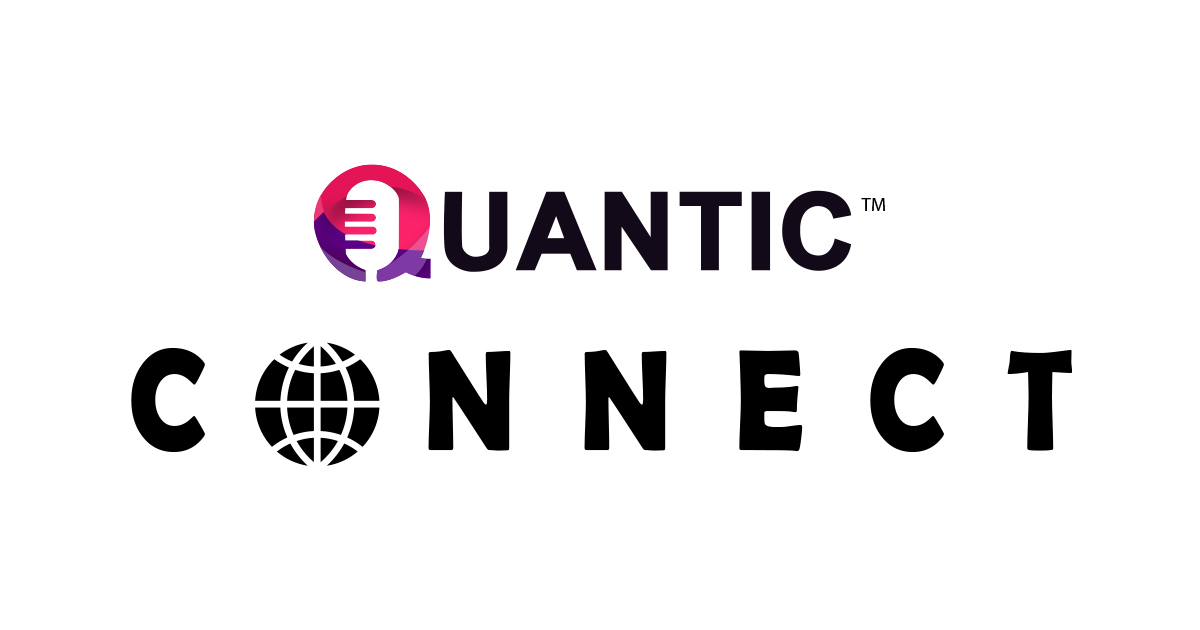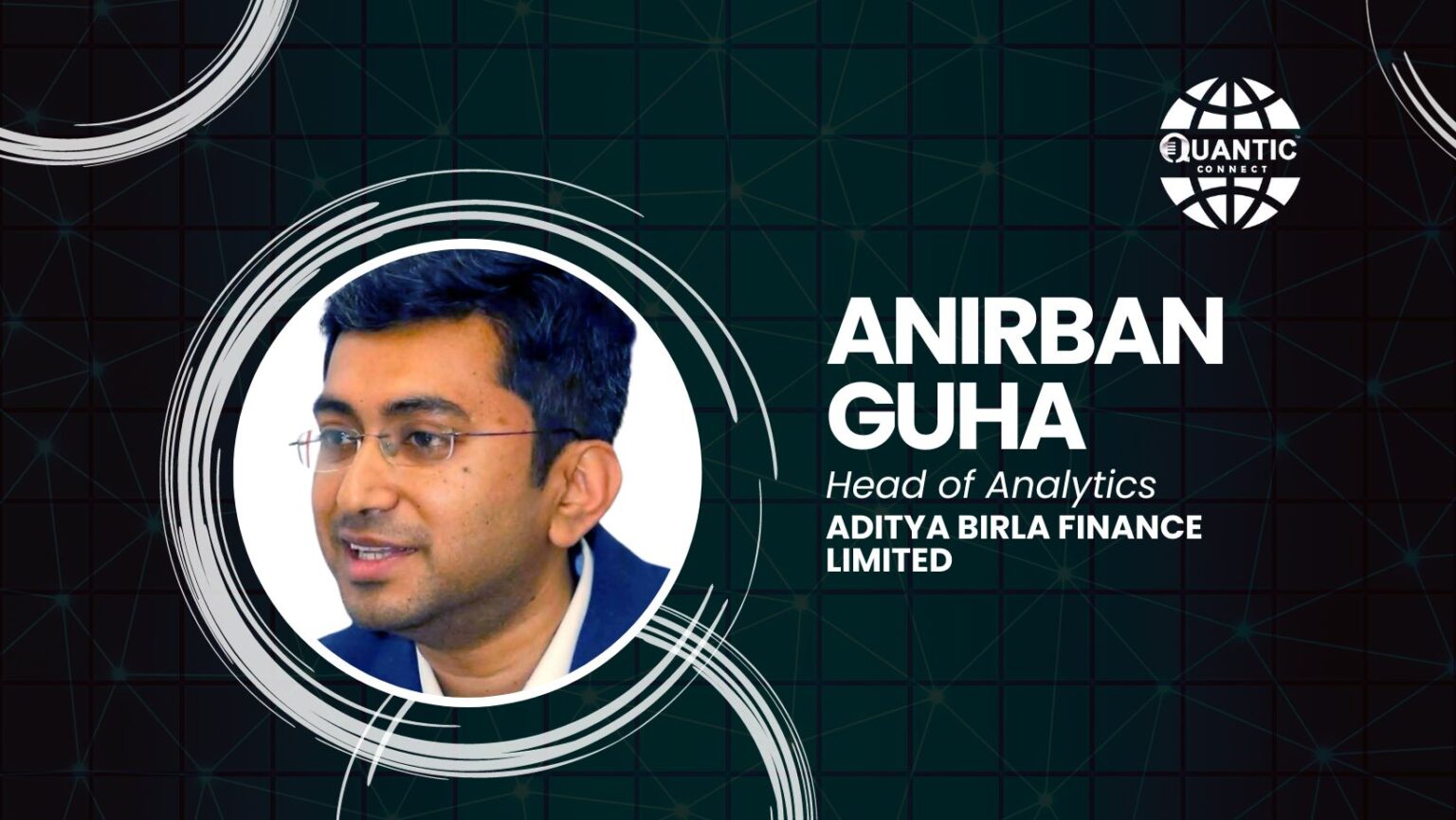Mumbai, January 15: Data analytics plays a pivotal role in the financial services industry, revolutionizing the way institutions manage, analyse, and derive insights from vast amounts of data. In this sector, data analytics involves the use of advanced techniques to examine financial data, uncover patterns, and make informed decisions. It encompasses various techniques, including statistical analysis, machine learning, and data mining.
Join Mr. Anirban Guha who is the Head of Analytics at Aditya Birla Finance Limited in conversation with Mr. Marquis Fernandes, who spearheads the India Business at Quantic India, as they delve into the importance of staying informed and updated in the Finance, quantitative economics, how predictive analytics is helping in the decision- making and the role of different financial risk management process.
Mr. Anirban Guha is the Head of Analytics in Aditya Birla Finance Limited (ABFL). He is responsible for all sorts of Risk Analytics across different businesses of the organization. Prior to ABFL he has worked with Barclays for 13 years, developing regulatory (Basel) and impairment (IFRS9) models for the Barclaycard business in US market. Prior to Barclays he has worked for GE Consumer, GE Commercial, GE healthcare finance and commercial business for Wells Fargo Bank. He has 19 years of core business expertise in different domain of Banking and Retail analytics. He has worked in Risk, Marketing and Operation analytics domain. His expertise majorly centers on Consumer Finance, SME (Small & Medium Enterprises) and Commercial Finance. He has a vast experience around Basel modeling, IAS39 modeling, IFRS9 modeling and CCAR modeling. Apart from regulatory modeling, he has worked on Business Models, Model Monitoring and Business Strategy (CLI/CLD). Through his 19 years of career he has worked across geographies – US, India, UAE and Africa (12 countries).
How do you stay abreast of the latest developments in the financial services industry?
To stay updated with the latest developments in the financial industry, I majorly depend on various newsletters and forum pages on LinkedIn. Social media helps immensely to know about the latest innovations, their pros and cons, use cases, regulatory fitments and first hand user experiences.
How has your background in Quantitative Economics from the Indian Statistical Institute shaped your approach to financial risk management, and what unique perspectives do you bring to the field?
I’ve passed out from ISI Kolkata, 20 years back. The then, analytics was at relatively matured stage. India as a country established the credibility. Not only automation and process efficiency, we have started working on different risk models, including regulatory models as well.
Me as a fresher out of campus, has started working on operational risk, commercial credit risk and in retail marketing models and analytics. My background in Quant techniques immensely helped in understanding the problem statement, analysing the solution. While analysing- to recognize the pattern in the data, connecting with the relevant probability distribution or model, analysing the test and validation results – at each and every step I could connect the application of my educational background with the work I do.
Could you share an example where predictive analytics played a crucial role in decision-making or risk mitigation within the financial services domain?
Every problem statement comes to analytics team as pure English problem. We first collect and analyse relevant data. Design the solution using our knowledge around Quant techniques. Then we create the solution and validate it through different testing methods. Finally, we explain the solution back in plain English. These are basic simple steps, how analytics bring strategic solutions to business problems.
How have you successfully applied the Balanced Scorecard framework to align strategic objectives and gauge performance in your professional domain?
I’m not sure what you meant by Balanced Scorecard framework. What I can share is, what industry as a practice, develop different Scorecards depending on its use at different stages of a business lifecycle.
Campaign propensity- Before we start a campaign, this Scorecard helps in selecting the population for targeted campaigning.
Response Scorecard- At campaigning stage we measure the effectiveness of a campaign based on the responses of a campaign.
Application or underwriting Scorecard – During account origination or application stage, we usually use this Scorecard to screen the TTD (through the door) population.
Behavior Scorecard– once customer is on boarded, these Scorecards helps is building Customer relationship strategies for the existing customers.
Foreclosure/Retention Scorecard – These scorecards helps in identifying the Foreclosure propensity of a customer. Accordingly, business can strategies the Retention strategies.
Collection Scorecard – these scorecards helps in predicting the repayment probability of an account and helps in designing the collection strategies based on it.
All these scorecards are different as per their objectives. Depending on the modelling techniques, the parameters for gauging their performances also varies.
What is your vision for the future of financial risk management, and which areas of innovation or adaptation do you anticipate as crucial in the years ahead?
Future of financial risk management lies in the understanding of using it. I don’t want to blame anyone, however lack of patience and understanding in interpretation of the data is causing the problem. We are more keen on the quantum of the analysis rather than Quantitative analytics. It is very crucial to understand whether we need 100 variables in a model or 10 strong variables are enough? It is very basic to understand the objective of a problem statement and then we need to see and check whether all the explanatory variables are carrying the intuitive relationships (sign of the variables) or not. An unstable analysis breaks the confidence of business, regulators and customers. Eventually people stop trusting the methodology and then the data.
We all know the importance of data and technology. Given all the new techniques and technologies are coming up every day, it’s really very crucial to know the basics. The knowledge foundation should be strong. Then we, the analytics professionals will be able to build a trusted organization, with the use of trusted data & trusted analysis for trusted financial risk management.
To know more about us / publish your article, reach us at
www.quanticindia.com
marquis@quanticindia.com.



